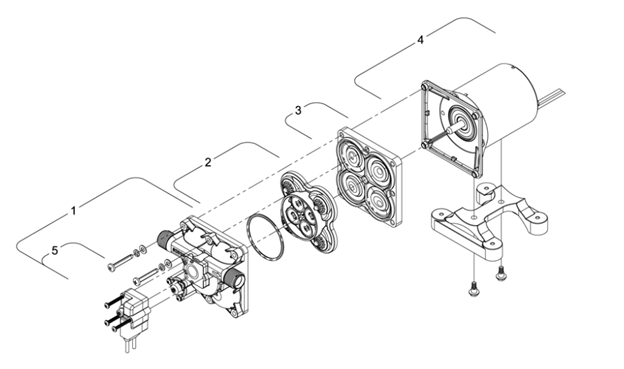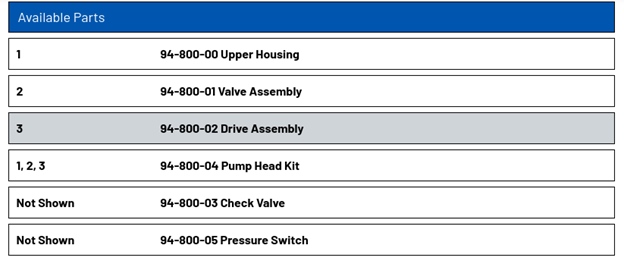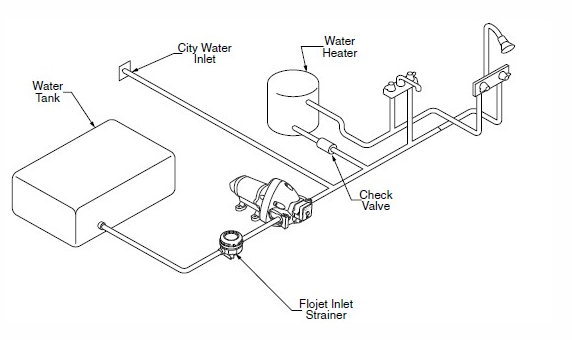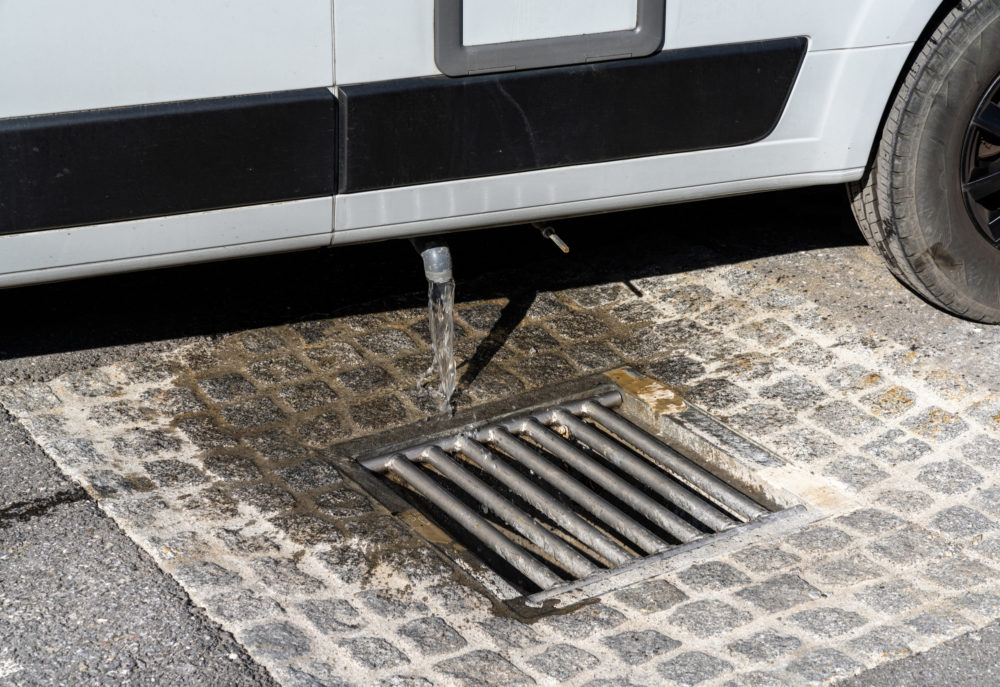How To Prime An RV Water Pump
Do You Have To Prime An RV Water Pump?
Priming a water pump is necessary to ensure it works properly and builds up the needed pressure to continue working effectively. It also helps remove air from the lines and the entire water system.

Contents
“Priming allows your pump to create the pressure that’s necessary for it to draw water in and pump it where it needs to go, but it also makes sure that there aren’t any unwanted leaks in your pump’s system while preventing backflow once the pump is turned off.” (Source: www.absolutewaterpumps.com.)
If your pump is not priming properly, there might be a leak in the system.
When and how should you prime your RV pump?
If you have winterized your RV or had it in storage and not used it for awhile, or if you have just replaced your RV water pump, you might have to prime your RV water pump in order to get it to work properly. Below are the steps on how to do it properly:
Step 1: Fill up your freshwater tank. Check the gauge to see when it’s filled completely.
Step 2: Turn on the cold water valve (only one in the camper); for example, turn on the cold water valve in the kitchen, and make sure all others are turned off.
Step 3: Turn on the water pump. There should be an on/off switch someplace on the monitor panel.
Step 4: Allow the pump to run. There should be water spitting out of the faucet. Run the water until all the air is out of the line and only water is running (without the air sputtering). Once the air is completely out of the lines, shut off the water faucet.
Step 5: You will have to repeat this process with all water taps to purge the air out of the lines.
How Does An RV Water Pump Work?
The RV water pump is a small but mighty tool that pushes water to each exit location within the RV water system. It circulates the water to all faucets, toilets, showerheads and pressurizes the water system.
The RV water pump location depends on the RV manufacturer, but it is usually located somewhere in the storage bay area:
“Water pump is normally located behind the docking station in your RV basement storage. You’ll have to unscrew and remove the panels directly behind the docking station to get access to the water lines and the pump.” (Source: www.forestriverforums.com.)
The RV water pump “anatomy” is shown below. The example below is a SHURflo 4009 12V Water Pump, but most RV pumps are very similar to this one and vary in performance based on motor selection.


Component 4 is the motor.
The SHURflo 4008 model components are listed below:

As you can see, you can replace individual sub-components, should they fail.
The overall RV plumbing layout schematic shows the place of the RV pump in relation with the other components:

The RV water pump does have a check valve. It is a one-way check valve that is located behind the city water connection. Its job is to let in pressurized water from the city into the RV plumbing system and keep the pump from draining when dry camping.
Any time you disconnect from a pressurized water source, air will enter the RV water plumbing. If you are unable to clear the air from the water lines, you might have a pinhole leak, a damaged or loose hose or clamps (often, near the freshwater tank) or another damaged component that does not allow the system to be pressurized with water.
Types Of RV Water Pumps
Just like with most RV components, there are a handful of leading manufacturers when it comes to RV water pumps. Almost all RV pumps are constant speed pumps, meaning they are either on or off. However, there are also a few RV water pumps that are more expensive that are variable speed, which means they run quieter (less “hammering” of the water pipes) and provide a constant supply of water (no pulsing).
There are several different features/strengths or preferences of each brand so depending on what you are looking for will help you determine what brand to choose.
It should also be noted that RV water pumps are 12V components so that you can run water even when not plugged into shore power.
The top brands that dominate the RV water pump market are SHURflo (Pentair), Flowjet and Aquatec (Remco).
Although SHURflo is the most commonly used RV water pump on the market due to its fairly dependable use and overall decent price range, there are plenty of RV owners who claim their units are too noisy and do not deliver enough water pressure. It is important to make a thorough assessment of one’s needs, preferences and to read customer feedback forums before making a decision.
Are RV Water Pumps Self-Priming?
Most RV water pumps are self-priming. They ship with a little bit of water in them to help them prime. However, after sitting in storage for an extended period of time or if you blew out your lines, you may need to manually prime them. If the pump fails to perform after one minute of running it, you might have to manually prime the pump (see steps below).
How To Prime An RV Water Pump
Step 1: Disconnect The Water Outlet From The Outlet Line
Step 2: Remove The Hose Collar From The Outlet Line
Step 3: Pour Water Into The Connected Rubber Hose
Step 4: Let The Pump Run For A Minute
Step 5: Reconnect The Water Line
There are several good videos that share this process step-by-step:
A more detailed video: https://www.youtube.com/watch?v=aL_3kz7y2zM
A super-short helpful video: https://www.youtube.com/watch?v=AEcmmXFO8ww
Important Tips When Priming An RV Water Pump
Should you need to prime your RV water pump, switch to winterization mode, attach the water tube and fill up the water tube with water. Submerge the tubing into a bucket of water and turn on the water pump. Once you start having water flow in the system, you have a primed pump. You can then switch the pump into water flow mode so that your pump can function properly.
Some safety tips to heed when priming an RV water pump:
- Turn off the power to the pump first to inspect for any damage or electrical issues. Electricity and water do not mix well.
- Check for loose components, as well.
- Check your tubing or hose that you will use for priming for holes or leaks.
- Open any relief valves on the pump system (if applicable).

Common RV Water Pump Troubleshooting Tips
When troubleshooting the RV Water Pump, these are the most common issues: “
- If the pump sounds like it’s working, but water doesn’t flow, check for blockage and leaks. Start from the fresh water tank or the municipal supply line. You need to verify every pipe and fitting between the water supply and your faucet. Unplug fixtures to check if water flows through them. If water flows successfully up to the pump, but there’s still no water, you need a new pump.
- If the RV water pump doesn’t work after you winterize your RV, verify connections and electricity. Make sure you left the drain open while you were filling up the fresh water tank and that you connected everything correctly after pumping RV antifreeze through the water lines. Also, check the electric supply of your pump. It must be grounded and receive 12 volts. Use a voltmeter to verify whether the pump is getting enough electricity.
- If the pump cycles on and off even when the faucets aren’t open, check for leaks and verify winterization. Your RV water pump will turn on when it detects a change in pressure. This typically happens due to a leak somewhere along the supply line, but it can also happen when improper winterization damages the inside of the pump.
Leaks are responsible for the vast majority of cases of RV water pump not priming. Leaks can occur anywhere in the supply line, including hard-to-reach areas hidden behind the paneling of your RV interior, so it can be difficult to get to them. Take your time and be methodical in your search.”
(Source: www.envirodesignproducts.com)
If there is no water in any of the faucets even though the pump is working, you have likely air in the lines or your lines are depressurized somehow. You might also have a leaky water heater or a leaky faucet. The best way to troubleshoot this is methodical shutdown and inspection of each component (see schematic at the beginning of the article),
If the pump keeps turning off and on with faucets turned off, you could be having a pinhole leak that might have been created due to improper winterization or other damage.
Should you leave your RV water pump on all the time?
Some experts claim that if you’re in a spot with a city water connection, it’s not necessarily bad to leave your water pump on, but doing so might be wasteful. You can hook up to the city water, but if your fresh water pump is left on, it will most likely continue to pump out of your fresh water tank when you use the sink, shower, or toilet.
The continuous use can also get annoying (if your pump is loud), lead to leaks and early pump breakdown due to unnecessary continuous use.
Finally, there is a handy checklist of components that could be causing issues and why their proper functioning is critical for the RV water pump to function correctly: “
- Check the freshwater tank: Let’s start with the most obvious – is the freshwater tank full? Be sure to check the tank gauge. We won’t hold it against you if you forgot to fill the tank or accidentally put the water hose in the wrong inlet (like the black tank flush inlet. Yes, it happens).
- Check the water lines: Inspect all the lines connected to the water pump, starting with the line to the pump itself. Look for loose connections, damaged lines, or signs of leakage. Then, double-check the lines leading to all of the faucets in your rig.
- Check the valves: While you’re inspecting the lines, check that all of the valves are in the correct position, including any winterization valves, intake valves, etc.
- Check the 12v water pump fuse: If you don’t hear the pump making noise it could possibly be a blown pump fuse. Check the fuse, change it if needed, and try switching on the pump again.
- Check the inlet strainer: Make sure the pump inlet strainer is clean (and check the lines for kinks while you’re at it). The typical pump strainer is a fine mesh that can quickly clog if the water in the freshwater tank ever had any sediment in it.
- Manually prime the pump: Most RV water pumps are self-priming. They ship with a little bit of water in them to help them prime. However, after sitting in storage for an extended period of time or if you blew out your lines, you may need to manually prime them. Every model is different, but on Shurflow water pumps, for example, you can remove the strainer, pour a little bit of water in it, run the pump for a second, pour a little more water in, then replace the strainer. You can see the process in action in the video below.
- Check the pump: Lastly, the pump itself could be bad or it’s not getting the correct voltage. “ (Source: camperfaqs.com)
FAQs
How long does it take to prime an RV water pump?
After you turn on the power, it should take about one minute. If you opened any relief valves, wait until water begins to run from them before closing them again. If the pump turns off naturally, it’s primed. If not, you may need to repeat the process.
Can you overfill the RV water tank?
Absolutely. In fact, it can actually cause significant damage to your RV. “If your tank has filled beyond capacity then the materials may give out due to weight and pressure. This will cause the waste to pour into the area that the tank occupies. The waste [or water] will also spread anywhere that a liquid can go.” (Source: vehq.com.)
When do you need to replace a bad pump?
An RV water pump should last about 10 years if well-maintained. However, if the pump starts making excessive or unusual noises, there is likely either motor failure or pump section issues that should be addressed.
What should you look for when buying an RV water pump?
According to www.thewanderingrv.com, there are six main things to consider when buying an RV pump: “
- Water Pressure (PSI)
- Water Pump Flow Rate (GPM, also known as gallons per minute)
- Thermal Protection.
- Pump Size.
- Amperage (AMPS). “ (Source: www.thewanderingrv.com)
Other than that, keep quality and price in mind, as well as brand reputation/customer feedback.

